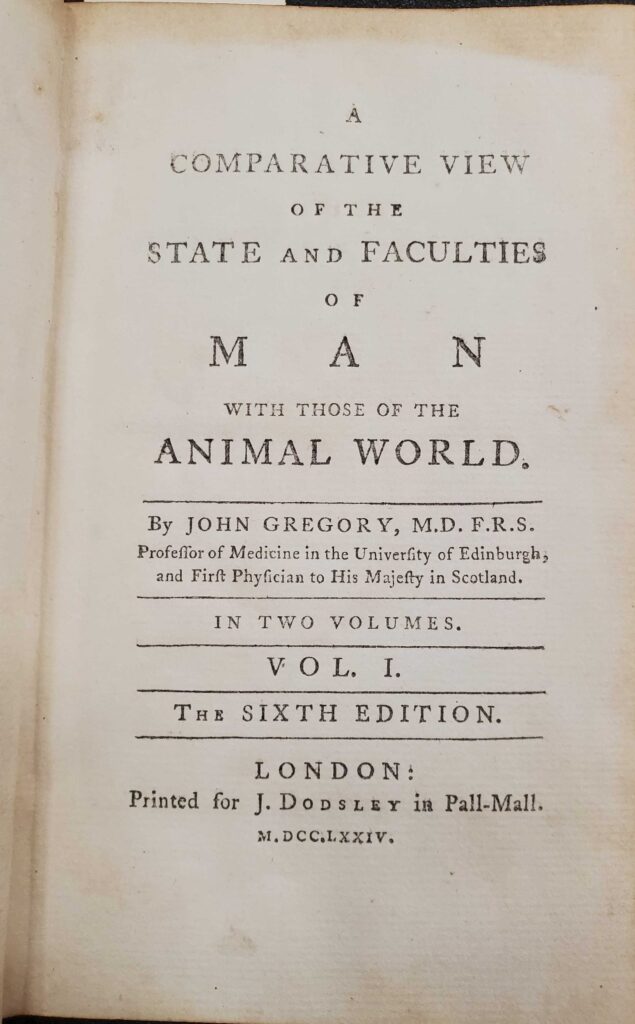
Identification
Author: John Gregory, M.D. F.R.S
Professor of Medicine in the University of Edinburgh, and the First Physician to His Majesty in Scotland.
Title: A Comparative View of the State and Faculties of Man with those of the animal world. Vol I & II. The Sixth Edition.
Publisher: Printed for J. Dodsley in Pall Mall
Place of Publication: London
Year of Publication: M.DCC.LXXIV (1774)
MSU Call Number: BF661.G8 1774 v. 1 (v. 2)
Contents and Author
A Comparative View was written by John Gregory, a Scottish physician, moralist, and author who lived from 1724-1773. He studied medicine at the University of Edinburgh and held teaching posts related to philosophy, mathematics, and physics at both Kings College and the University of Edinburgh.
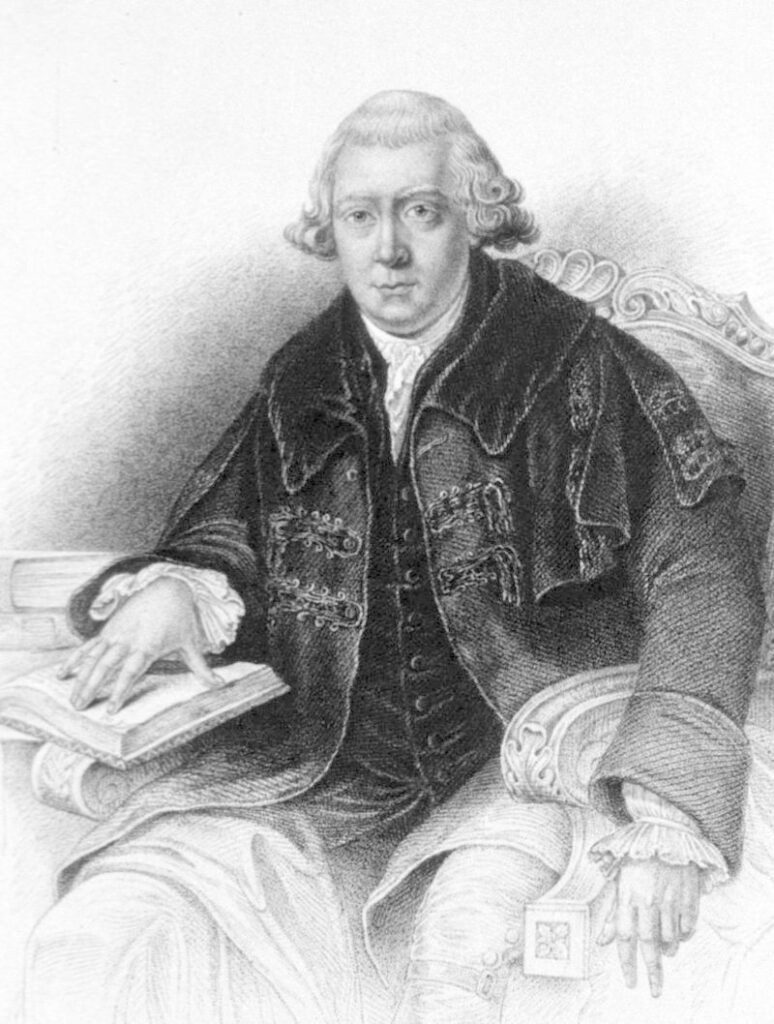
Gregory practiced medicine both in Scotland and London. While in London, he found himself in an informal circle of intellectuals, led by Elizabeth Montagu. Gregory moved back to Edinburgh in 1964 and passed away in 1773 after a successful career of writing, teaching, and practicing medicine.
The preface of A Comparative View includes an apology for the title, which the unknown author of the preface noted did not accurately represent the contents of the book. The preface continues to explain that the entire work was written in the context of an intellectual society of friends and was not written with the intent to publish, likely that Gregory was involved in London.
“[In the first edition] the public was informed that it consisted of some discourses originally read in a private literary society, without the most distant view to their publication.”
Vol I, pg i
The first volume contains mostly information about the correct care of infants and children and how the common practices had changed with scientific advancement. Gregory mostly advocates for a return to nature and adoption of practices found in other cultures or amongst other animals.
In the second volume, Gregory largely contemplates music and the arts as well as religion in terms of human’s happiness and health. He prioritizes philosophy and history at the center of the motivation for creating art.
In many ways, Gregory’s The Comparative View reflects many Enlightenment principles such as the use of science to improve the human condition, embracing nature, and centering philosophy and reason in health practices.
“These few observations are selected […] to prove that many of the calamities complained of as peculiarly affecting the Human Species […] are entirely the result of our own caprice and folly, in paying greater regard to vague and shallow reasonings, than to the plain dictates of Nature, and the analogous constitutions of other Animals”
Vol I, pg 104
Physical Descriptions
Considering that the two volume collection is almost 250 years old, both books are in fair condition and appeared to have traveled together the entirety of their lifetimes.
Both volumes have a dark brown leather cover with signs of use such as small scratches and discoloration but in overall good shape. The back cover of volume one is only attached via the book’s binding. Both books contain red built-in bookmarks and gold gilding on the edges of all edges of the cover. The first volume’s spine is slightly torn and missing what appears to be a date, likely 1774.

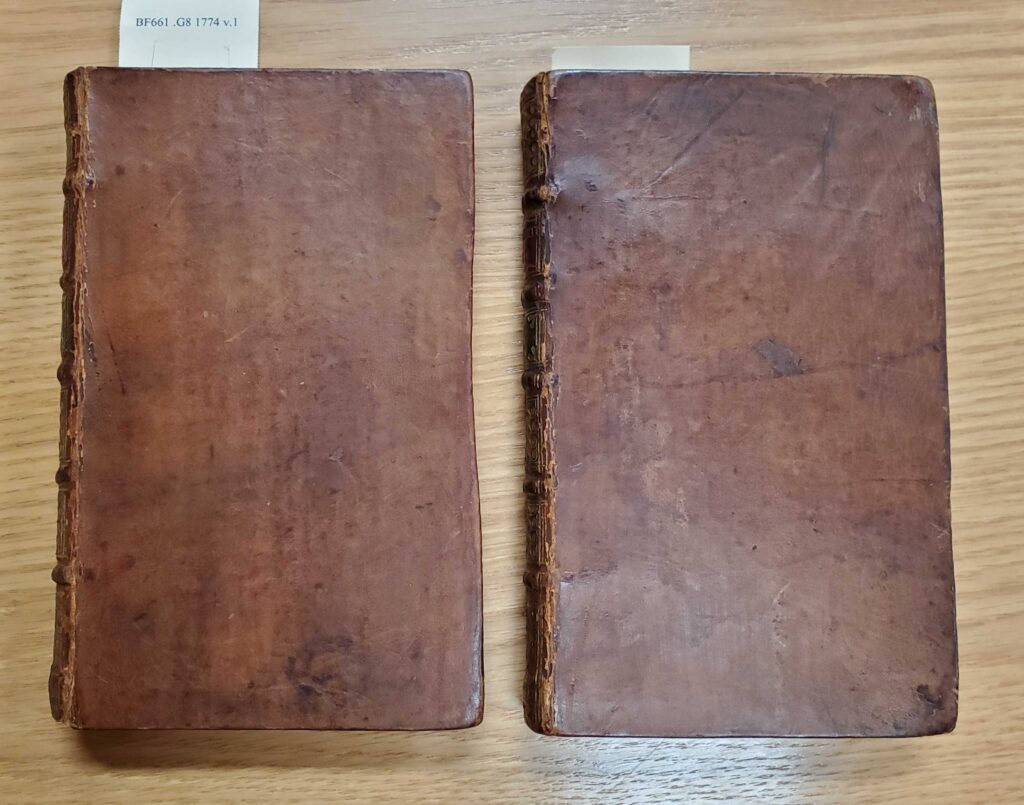
Provenance Evidence and Analysis
There are three names present in both volumes as well as two armorial bookplates. The signatures and bookplates are remarkably similar in both volumes, indicating that both books were purchased and likely passed down as a set at the same time.
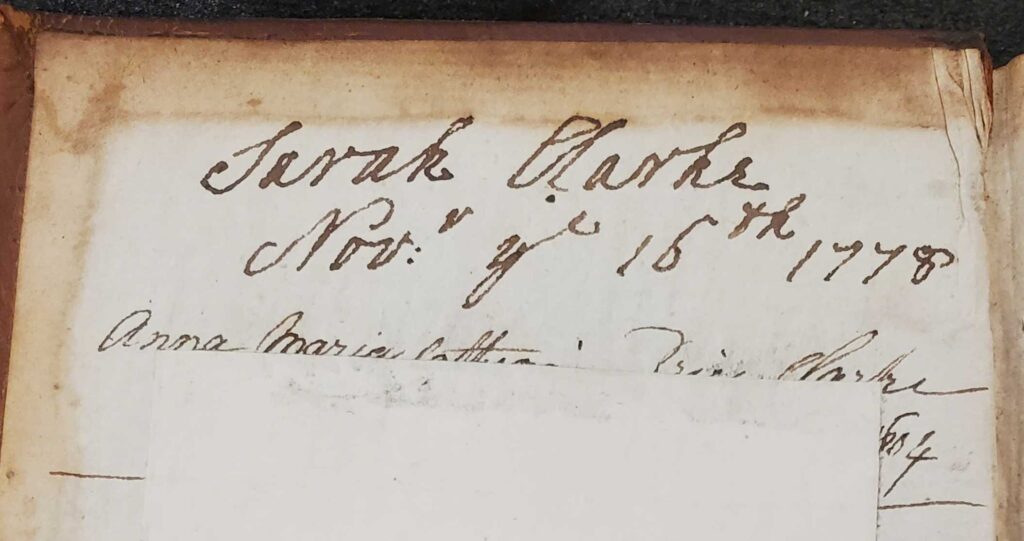
Sarah Clarke
The first owner appears to be Sarah Clarke. Her name is written on the inside cover pastedown along with a date of Nov. 16, 1778, about four years after the book was published. Not much can be found on Sarah Clarke besides that she married in 1783, had one daughter named Anna Maria Catherine Price Clarke, died in 1801 and is buried in Derbyshire, England.

Anna Clarke
The book was evidently passed to her daughter Anna Clarke.
Her name is written a total of five times in the two volumes, twice under her mother’s name, once in the middle of the first page of the second volume, and on the first page of content in each volume. Anna married Walter Butler Marquess of Ormonde in 1805 and died in 1817 and is buried in Ulcombe, Kent.
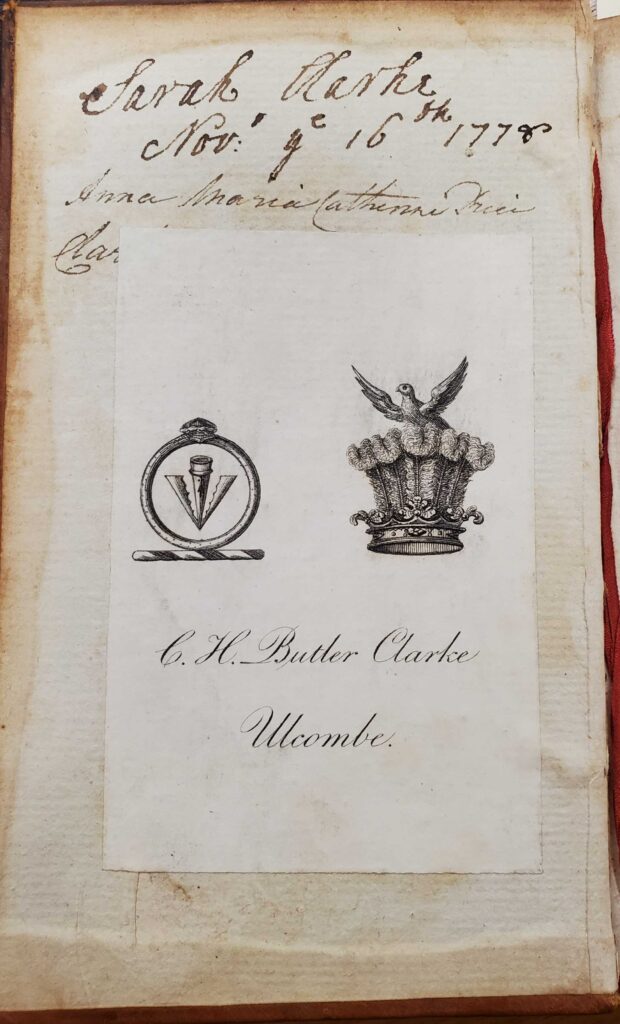
C.H. Butler-Clarke-Southwell-Wandesforde
From there, it is likely the next owner was Charles Harward Butler-Clarke-Southwell-Wandesforde, younger brother of Walter Butler. He evidently added the surname Clarke after his sister-in-law, Anna Clarke, and added Southwell-Wandesforde around or before 1830 in anticipation of inheriting land.
Bookplates
It is likely that Butler-Clarke gained possession of the books before the addition of his last two names as the first bookplate only reads “C.H. Butler-Clarke.” In both volumes, the first bookplate is located on the inside pastedown, partially covering Anna Maria Catherine Price Clarke’s handwritten name. C.H. Butler’s bookplate contains an element of the heraldry on the second bookplate as well as a crown with a bird.
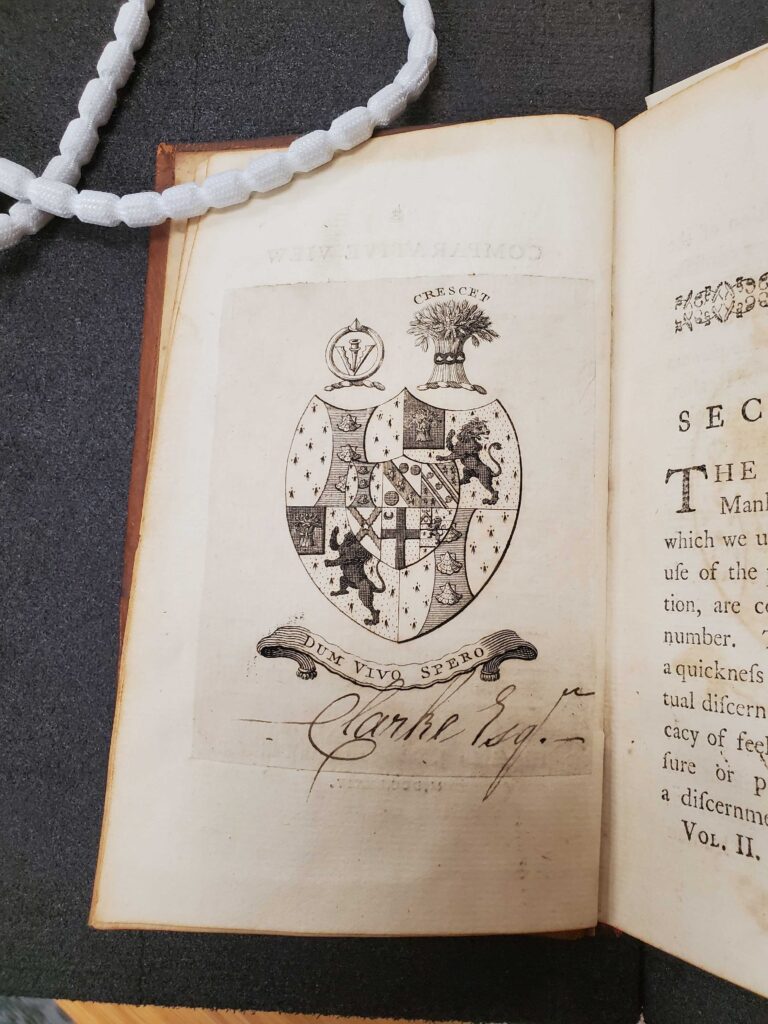
It is uncertain if the second book item with the coat of arms belongs to the Butler or Clarke family, or another unrelated family. It is certainly an amalgamation of family crests; it includes two lions, the “V” shaped object featured on C.H. Butler-Clarke’s bookplate, and the latin phrase “Dum Vivo Spero” which roughly translates to “while I live, I hope.”
On the heraldic bookplate in the second volume, “Clarke Esq.” is written, implying that someone affiliated with the name Clarke, the book itself, or the coat of arms is a lawyer.
It is possible that C.H. Butler-Clarke was himself a lawyer as he is referenced as “the Honorable” in many sources. If this is the case, it is likely the Butler family crest but we can not draw this conclusion for certain.
After C.H. Butler, it is uncertain where the books traveled to next or how they ended up in the MSU collection.
Significance and Conclusion
One of the most unique things about this set of books is that it had two female owners during a time when such a thing was not overly common. Coupled with the fact that the book itself, although not exactly controversial, was unconventional for the time, the set of books has an interesting history that was ahead of its time.
Sources
- https://www.ancestrylibrary.com/
- https://www.ncbi.nlm.nih.gov/pmc/articles/PMC1769528/
- https://server.thepeerage.com/p4867.htm
- https://historyofparliamentonline.org/volume/1820-1832/member/butler-hon-charles-1780-1860
Created by Katherine Denzin in Fall 2023 for Dr. Brockey’s HST 475 at Michigan State University